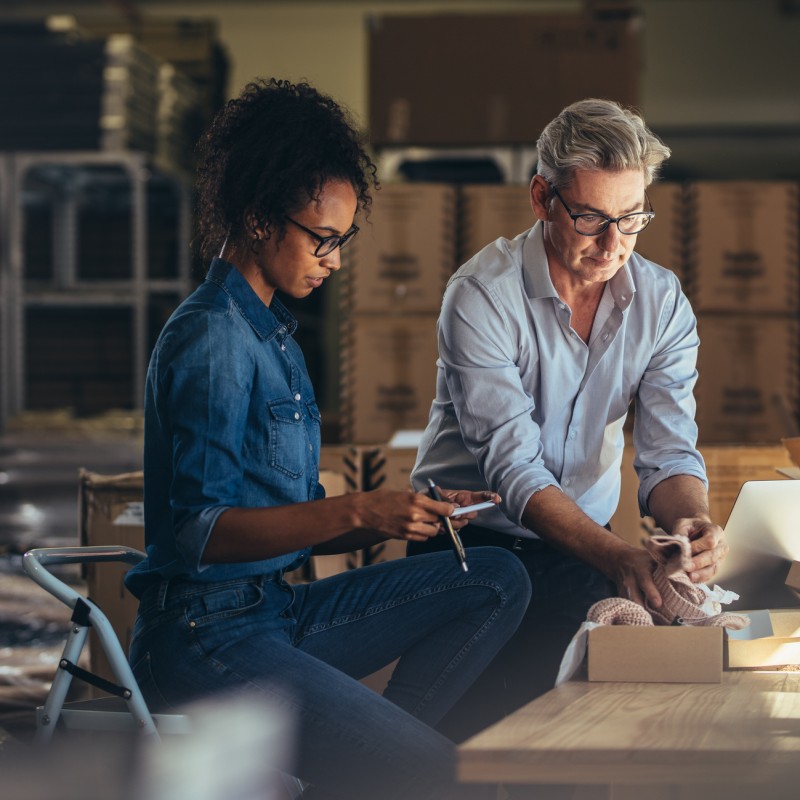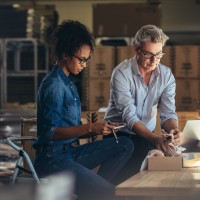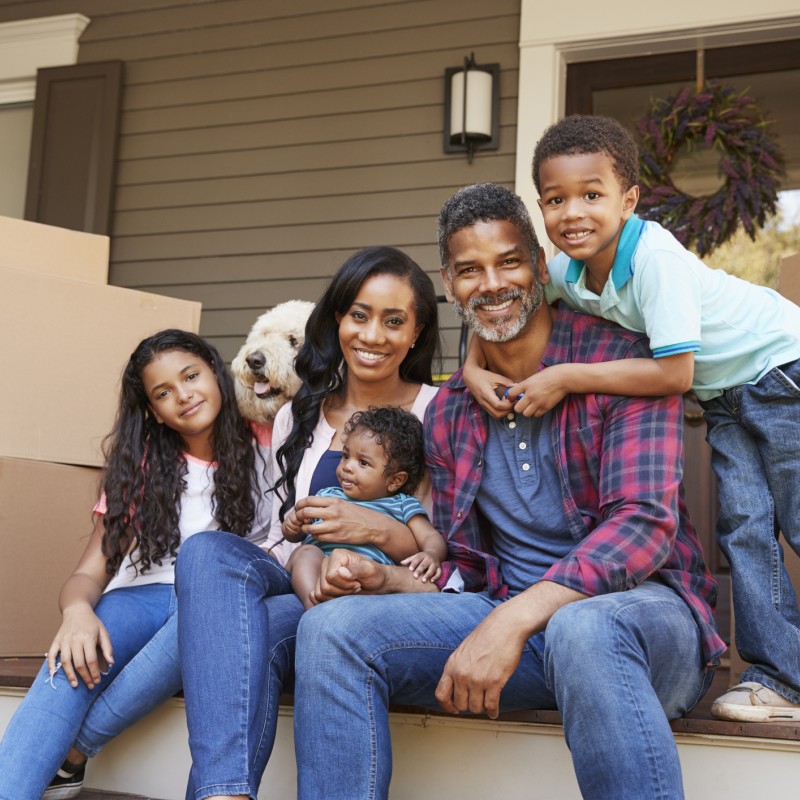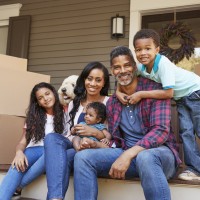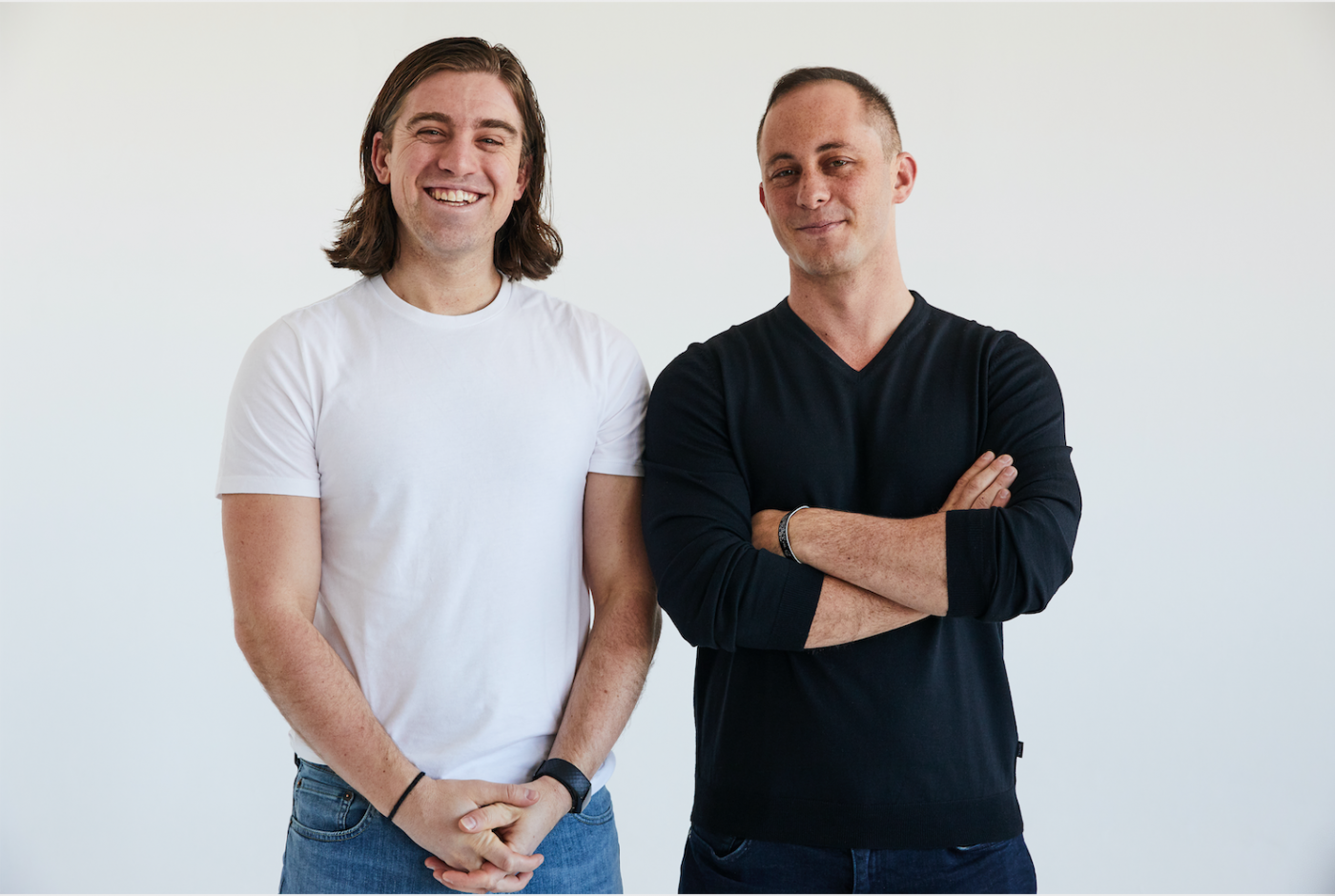The Milken Center for Advancing the American Dream shares diverse perspectives relating to our four pillars and the American Dream. The Dream looks different and means something different to everyone. While views and opinions expressed here are those of the authors and do not necessarily reflect the Center’s position, we believe it is important to explore issues from many angles to promote productive dialogue.
In their just-published book, Union: A Democrat, a Republican and a Search for Common Ground, Jordan Blashek and Christopher Haugh tell the story of hitting the road to explore America and find out what can bring our country together in a time of extreme division and strife. In the course of their three-year adventure by car, visiting 44 states and covering 20,000 miles, they talked with and listened carefully to the people they encountered, while challenging and expanding each other’s viewpoints and worldview. Their travels often led them to conversations about the American Dream, a thread that runs through the book.
We at the Milken Center for Advancing the American Dream were interested in how Jordan’s and Chris’ journey informed their beliefs about the American Dream, and what they learned about unity, identity, community and what binds us together as Americans.
We’d like to start by asking you the same question you asked Pete, the truck driver you met on one of your trips: What does the American Dream mean to you?
Chris Haugh: I believe the American Dream is a mission statement, which is why I’ve always found it hard to put a finger on. I believe it remains an open question as to whether we’re talking about the next generation doing better than the last, the right to achieve as much as one’s skill allows, or a question of self-actualization well beyond dollars and cents. Growing up, I was never quite sure what it really was, and the road compounded that feeling. The people we met talked about it in radically different ways, too—be it the right to be left alone or to put a meal on the table or to get rich. These days, Jordan and I like to say that the American Dream seems to contain multitudes, and therein lies its greatest power. It can mean different things to different people at different times.
Jordan Blashek: When we started our trips, I believed that there was almost something spiritual about the American Dream. To me, it was the sinew that held the American people together. Without a belief that the Dream was possible, our democracy would move from positive sum to zero sum, and we would fall apart. I still believe this today. On the road, we did see many people articulate the Dream in different ways: Nelson, an El Salvadoran immigrant in a Tijuana free kitchen, described it as a better life for him and his mother; Pete, a truck driver from Daytona Beach, Florida, wanted a life of respect and dignity; and Gabriel, a poet at Parnall Prison, hoped for redemption. For me, I still love Truslow Adams’ original articulation from 1931: “The American Dream is that dream of a land in which life should be better and richer and fuller for everyone, with opportunity for each according to ability or achievement.”
In some ways, your book reflects a tension between the American Dream as a collective ideal versus a home to individual aspirations. Is that a fair characterization? How does that collective ideal come to bear on the individual and vice versa?
JB: That’s an interesting question. We never touch on it directly in the book, but there is some tension, or interplay, between the collective ideal and individual aspirations. The idea of a land in which life can be “better and richer and fuller” for everyone is a collective ideal. It’s about the type of society we want to build together. Yet, each person gets to choose what better, richer, and fuller means. In each generation, we seem to develop a dominant narrative for what that might be, such as a “house in the suburbs and a car” or “doing better than your parents,” which shapes and is shaped by what individuals aspire to.
CH: I’d also argue that the communal and the individual are complementary. Those who were best able to articulate the Dream—and come the closest to achieving it—were surrounded by strong communities. Belonging matters. Community was a reason for hope and aspiration whether one found it in an active Facebook group for truckers, a collection of veterans working together at a gun range in Arizona, or returning citizens making handbags side-by-side in Detroit. Our communities help design and perpetuate our dreams even when those dreams are individual by nature. Those who were seemingly on their own also seemed to be the most unmoored from any sense of a future.
At the beginning of Union, you speak of a singular identity that is an American one – it is an intriguing idea. What do you mean by that? What do you see as gained or lost in forging a singular American identity?
JB: In 2016, when we set off on our first road trip, we saw and heard division all around us. But on the road we saw something else, too. We heard people wondering what had happened to “us,” by which they meant the American people. They were as bewildered by the division as we were. So we spent a lot of time trying to identify what we share, and in doing so we heard people over and over again express a deep well of feeling towards America and their fellow citizens. So that is the “singular identity” we write about in the book—the identity that unites all Americans as one people with shared values and common ideals. “American” is just one identity among many that we all hold, but sometimes we forget about the things we do have in common. Union is in part an effort to remind Americans about those things we share.
CH: Maybe it’s radical to believe in a singular American identity now, but five years ago it didn’t feel that way. I came of political age listening to President Obama say things like, and I’m paraphrasing here, there are no red states and blue states, just the United States. I believe we are a nation built on ideas—not race or religion or ethnicity—and that is what holds us together. Jordan felt the same way, and we talked about that a lot early on. Which is why it was upsetting to see the on-going alienation we all feel so viscerally now. Admittedly, a lot of people have been left out of the definition of “American” in the past, not the least of which were those kept in bondage. But something else Jordan and I agreed on was that what makes the United States somewhat unique is how malleable it is to the will of each successive generation. We can recreate what it means to be an American and usher in new groups, and that’s why that singular identity has persisted over hundreds of years.
You set out, in part, in hopes of finding unity, or at least the common ground that is rooted in a better understanding of others’ perspectives. Were you able to find what binds us together as Americans, regardless of background or beliefs?
CH: Well, I personally didn’t set out with that goal. I was originally far more skeptical—or “pessimistic,” as Jordan sometimes says—than he was at the offset. I was convinced we’d see signs of decline. You can’t honestly read the news and ignore the cracks in our democracy—the broken criminal justice system, a persistent opioid epidemic, racial and economic inequality. It felt unavoidable. But we then heard the same desires and values expressed over and over again. We heard people say things like, “People deserve a second chance,” “I just want to be treated with dignity,” or “this country is all about freedom.” The people we met found themselves in different situations, but much of the ideas were the same and often the language was too.
JB: I agree with how Chris describes it. I would also add that in addition to the values we share, we also have a shared future and that necessarily binds us together. One idea that Chris and I love is the view of America as an intergenerational project to create a “more perfect union.” Each generation has the ability and responsibility to engage in that project, so we can move towards a society that is closer to “better and richer and fuller for everyone.” If you believe in that project, then you have to believe that we are bound together by that shared vision for a better future. It’s ok that we might have slightly different ideas for what that vision looks like, or how to get there, because that’s what democracy is: a messy but fair process for creating the future together.
Your account of the traffic stop by a state trooper on your way to Idaho and the conversation about police brutality that followed was really impactful. Over the course of an argument, you voiced the opposing viewpoints that many of us are grappling with right now. In the aftermath of George Floyd’s killing and months of protests, have you revisited this conversation? Have your thoughts or feelings changed?
JB: A lot of our early conversations and fights were about police brutality. We came at it from very different directions given our past experiences and political priors. As a former Marine officer, I had a lot of sympathy for law enforcement since the military and law enforcement communities have a lot of overlap and face similar dangers. Chris had his priors, too, and that led to very emotional fights in which we talked past each other. Over time, we learned to listen by trying to understand each others’ past experiences rather than just yelling about data or policies or current events. One thing I will say about the current moment is there was no daylight between us over the killing of George Floyd and the horrible actions of the police officers. Even more, we felt that there was near universal condemnation across the country. It’s important we don’t forget that.
CH: We have revisited those conversations but largely in public forums. Though I will say: I remember being nervous before our first call after George Floyd’s murder. Would we disagree on something? I was sick over what had happened, and I didn’t know what to expect. But the first thing Jordan said was, “That was heinous and something needs to change.” Which was of course exactly what he would say. Now, lots of leaders failed that same test, but what I heard in Jordan’s words was this growing consensus about what happened that day in Minneapolis and how radically things need to change going forward. Have my own feelings changed since then? Yes, I thought I was well educated on how bad things were or weren’t, and it turned out I had no clue. My sense for the lived experience of Black people in this country was paltry at best. So I am listening, and I have little to add right now except to say Black Lives Matter.
At a few points in the book you address the ways we shape ourselves to fit our communities, as well as the important work to bind that takes place in communities. Could you speak to the ways in which community or communities can shape how we move forward?
JB: One of our early insights from our road trips was that community makes us stronger, and strong communities are generous. They are confident enough to welcome in the stranger, to tolerate differences, and pass on their values to the next generation. We also found that a lot of young people are yearning for community in the U.S., and they are finding it in social movements and other new forms. But strong communities have something special: a set of rituals that bind members together. This was driven home for us when we met a group of military veterans in Page, Arizona who had started a business together and formed a small community. They drew on their shared culture from the military, had end-of-week barbecues, and celebrated military traditions, the American flag, and other meaningful totems. They may have been somewhat isolated in Page, but they were one of the most welcoming groups we met on the road. We came to believe that this was due in part to the power of their rituals.
CH: It’s not just ritual, but story, too. Communities build their own founding narratives and then re-work them as time goes on. That’s how we organize large numbers of people and keep them working in concert, or not at odds at the very least. Stories about freedom, opportunity, and justice are how we begin to order American society. Although, the story of our larger community is going through a reformation right now. Are we a good country or a bad one? Are we born of sin and irredeemable, saintly, neither, or both? How do we define the future? For once, these are all open questions unlike most other historical moments. How we retell the story of our past, present, and future will define what kind of national community we live in going forward.
Based on what you learned throughout your journeys, are you optimistic about the future of the American Dream?
JB: Yes, but we put it slightly differently. The way we define it, “optimism” is the faith that things will get better with time. “Hope,” on the other hand, is the belief that things can be better if we make them so. Hope is active. It requires work. We are hopeful for the future of the United States—and by extension the American Dream—because we saw amazing people all across the country in every community working hard to make life better for those around them. Because of them, we believe the future can live up to Truslow’s original vision.
CH: I couldn’t agree more. We saw the ugly—and we were told of it—but there were too many people working to make things better to say, “America is in terminal decline.” They are who make me—who make us—hopeful for a new day. And a part of their mission was to renew the Dream. They are expanding it and ushering in new voices and definitions. For too long, I think the American Dream was accessible to a select few. With enough work, that will change. In many ways, it already has, and that continuing shift is hopeful in and of itself.
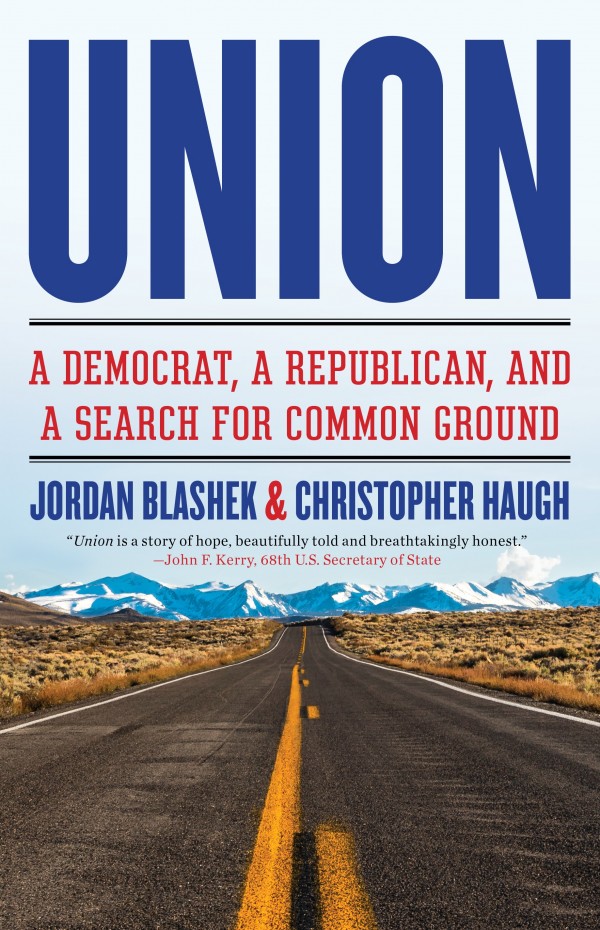
For more information on Union and where to purchase the book please visit their website or contact your local bookseller.


